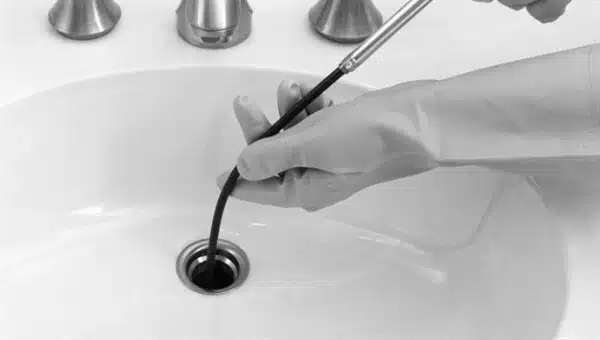Every homeowner faces a variety of challenges, and among the most daunting can be dealing with plumbing issues. A clogged sink trap is a common issue that often leads to calling a licensed plumber. But with a little confidence and the right tools, sink trap cleaning can be a do-it-yourself task. Here’s a step-by-step guide to help you conquer sink trap cleaning and overcome your plumbing fears.
Table of Contents
Understanding the Importance of Sink Trap Cleaning
The sink trap may appear as an unassuming feature of your home’s plumbing system, but it plays a critical part in maintaining a healthy, odor-free environment. Situated beneath the sink, this J or U shaped pipe holds water to form a barrier against unpleasant sewer gases that would otherwise make their way up through the drain.
However, with regular use, this hardworking component becomes a catch-all for a variety of materials, such as hair, soap scum, food particles, and other debris. These unwanted elements slowly build up over time, reducing the rate of drainage and, in severe cases, creating complete blockages.
Engaging in routine sink trap cleaning can prevent such occurrences, ensuring smooth flow through your pipes and preventing larger plumbing issues. This can save you significant time, stress, and potential repair costs in the long run. A clean sink trap means a well-functioning, hygienic kitchen or bathroom, contributing to the overall comfort and functionality of your home.
Identifying the Tools Needed for Sink Trap Cleaning
In order to successfully complete your sink trap cleaning, you’ll need to first ensure you have the right tools at hand. Gathering these tools in advance can make the process smoother and less time-consuming. To start, you’ll require a sturdy bucket. This will be used to catch any water or debris that comes out when you remove the trap, saving you from additional cleanup.
Next, adjustable pliers are essential for loosening the slip nuts that secure the trap in place. Remember, it’s best to have a tool that can adjust to fit different sizes to account for any variations in your home’s plumbing fixtures.
For the actual cleaning of the trap, a bottle brush or an old toothbrush will come in handy. These tools are perfect for reaching into the trap and thoroughly scrubbing away any accumulated debris.
Finally, gather some rags or old towels. These will be used for wiping down the area, cleaning up any spills, and drying off the trap after cleaning. You might also consider wearing rubber gloves during this process.
While not a tool per se, gloves can protect your hands from the grime and odour typically associated with this task. Having all these tools at your disposal will prepare you to tackle sink trap cleaning efficiently and confidently.
Removing the Sink Trap
Firstly, position your sturdy bucket directly underneath the sink trap. This will catch any residual water or debris that escapes when you disassemble the trap, avoiding extra cleanup later.
Next, using your adjustable pliers, begin to loosen the slip nuts located at both ends of the trap. Once these are loosened sufficiently, you should be able to finish unscrewing them manually.
Upon detaching the trap from the rest of the plumbing, carefully lift it and empty the contents into your bucket. Be prepared for the possibility of a small mess – this is normal and to be expected. However, the bucket and your old rags or towels should help manage any spills or splashes during this process.
Cleaning the Sink Trap
Once the sink trap is disassembled and its contents emptied into your bucket, you can begin the cleansing process. Utilize the bottle brush or old toothbrush to meticulously scrub the inside of the trap. This part of the process requires diligence, as debris and scum often adhere stubbornly to the trap’s interior walls.
After you’ve scrubbed off every bit of accumulation, ensure to rinse the trap with warm water. This helps to wash away any residual particles and leaves the trap thoroughly cleaned and ready to be reinstalled. Remember, a properly cleaned trap not only ensures a smooth flow of water but also prevents unpleasant odors and possible future blockages. Hence, never underestimate the importance of this crucial step in sink trap maintenance.
Reinstalling the Sink Trap
After ensuring that your sink trap is as clean as it can be, it’s time to put everything back together. Start by aligning the trap with the existing plumbing. Hand-tighten the slip nuts to secure the trap in place. Using your adjustable pliers, give the slip nuts an extra turn to ensure they are snug, but be cautious not to overdo it. Excessive tightening could potentially damage the threads, leading to leakage problems later on. Remember, a securely reattached sink trap is crucial for a fully functional and efficient drainage system.
Checking for Leaks
The final step in your sink trap cleaning journey is to verify the integrity of your reassembled plumbing. This involves running water through the system to confirm there are no leaks.
After the trap is reinstalled, run your faucet to allow water to fill the trap. Keep a keen eye on the joints and the base of the trap for any water seeping or dripping. If you see water escaping, this likely indicates that the slip nuts need a bit more tightening. Adjust them with your pliers until no more water leaks from the trap. Do this gently, though. Over tightening can result in damage to the pipes, causing more issues down the road.
This check is crucial because it helps to prevent future water damage which could lead to extensive repair costs and the potential for mold growth. As such, you must not overlook this final stage in the process.
If your trap remains leak-free after this test, congratulate yourself. You’ve successfully completed a sink trap cleaning, enhancing the performance of your plumbing system and expanding your home maintenance skills.
Keep up with regular inspections and cleanings like this, and you’ll help prolong the life of your pipes and maintain the efficiency of your drainage system. This self-sufficiency is a significant step forward in your journey as a new homeowner, proving you can conquer any household challenge that comes your way.
Conclusion
Our team is dedicated to being on time every single time, so you can be assured that we will handle all of your plumbing issues quickly and efficiently. Our professionalism is evident from the time we enter your home until the project is finished, and we take great delight in it. We appreciate your time and know how important it is to respect your space. We promise to return your home to its original, undamaged state after we’ve completed the job to your satisfaction.

